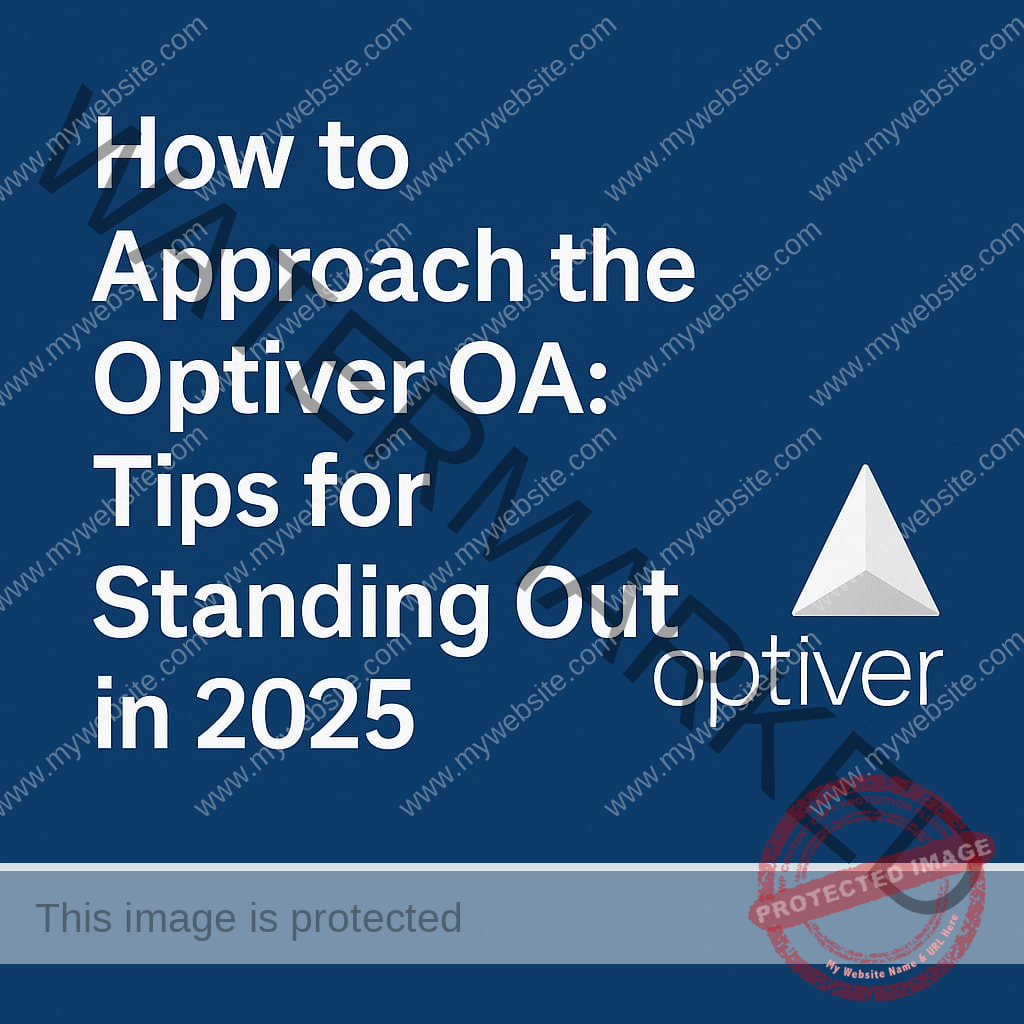The world of algorithmic trading is intense, fast-paced, and unapologetically competitive. If you’re applying to Optiver, you already know it’s not your typical software engineering job. And their Online Assessment (OA)? It reflects that intensity.
Whether you’re aiming for a trading technology internship or a graduate quant dev role, the OA is likely your first major hurdle. But it’s not just about coding. It’s about precision. Speed. Mental math under pressure. And the ability to think clearly when the clock is ticking.
If you’re looking to understand what this evaluation entails, how to prepare effectively, and what traps to avoid, this breakdown will help you walk in with confidence. You can also explore a full archive of recent problem types and formats on optiver oa 2025.
Understanding the Structure
Optiver’s OA isn’t just another LeetCode grind. Depending on the role, it may contain:
- Mental arithmetic questions: Think quick-fire math, mental calculations, and reaction-time drills.
- Logic puzzles: Often presented in multiple-choice format but requiring deduction, pattern recognition, or numeric reasoning.
- Coding tasks: These may be algorithmic problems or implementation challenges, where time complexity and edge case handling really matter.
- Trading simulations: For certain roles, a simple game-like interface might simulate decision-making under constraints (e.g. limit order matching or price prediction).
You’ll typically have 30 to 60 minutes, often with no option to pause. Time pressure is a core component of the test itself—not just a logistical feature.
Why Speed Matters More Than Style
Many candidates fail not because they lack technical ability, but because they underestimate the speed-to-accuracy balance. Optiver doesn’t necessarily care how elegant your code looks. They care whether it’s correct, fast, and submitted on time.
In the mental math section, for example, you may face 80 to 100 problems in under 10 minutes. That’s less than 10 seconds per question.
It’s not about solving everything. It’s about managing tempo, skipping strategically, and not letting early mistakes rattle your rhythm.
Likewise, for coding questions, writing a brute-force solution that works in 5 seconds is sometimes better than crafting an optimal answer that takes 15 minutes to debug.
Smart Prep Strategies (That Aren’t Just “Do LeetCode”)
Here’s how you can prepare like someone who gets it:
1. Practice High-Speed Arithmetic
Use apps or online drills that simulate 1-digit and 2-digit addition/subtraction under time pressure. Try flash mental math (no calculator, no notes). Focus on:
- Spotting patterns (e.g., multiples of 11, 9-tricks)
- Estimating without overthinking
- Moving on quickly when stuck
2. Get Familiar with Logic-Based MCQs
Practice with games and puzzles that involve numeric logic, sequences, or modular arithmetic. Great sources include:
- HackerRank’s “Mathematics” domain
- Competitive math puzzles (like AMC-style)
- IQ test-style practice with number patterns
3. Simulate a 30-Minute Session Weekly
Set a timer. Mix in arithmetic, logic, and one short coding problem. No stopping, no googling. This mimics the real stress level of the OA and helps you build pacing confidence.
Coding Strategy for the OA
When coding is part of the assessment, here’s how to optimize your time:
- Plan before you type: Write a quick mental plan or pseudocode. It prevents you from rewriting the whole solution halfway through.
- Choose safe solutions first: A working O(n²) method might be fine for small inputs—don’t obsess over optimizing unless time permits.
- Test small edge cases fast: Manually test your code on inputs like [], [1], [1, 1], and [100000]. Catch the common crashes early.
- Mind the language you pick: Python is great for math-heavy code, but consider faster alternatives like Java or C++ if input sizes are huge.
Common Mistakes and Easy Fixes
| Mistake | Fix |
|---|---|
| Spending too long on a single question | Use checkpoints. If 5 minutes in and no progress, skip. |
| Trying to impress with fancy code | Stick to what’s clear, readable, and debuggable under stress. |
| Forgetting keyboard shortcuts | Learn key combos in your coding environment (e.g. run/test toggle). |
| Panic during math speed rounds | Breathe. One wrong answer doesn’t ruin your score—but rushing might. |
What Candidates Say
Feedback from recent test-takers is fairly consistent: the OA is fast, challenging, but fair—if you’re prepared.
Some describe it as “the most intense 30 minutes of mental math I’ve ever done.” Others say it felt more like a reaction test than a problem-solving session.
Interestingly, many who didn’t pass on the first attempt said they failed not because they didn’t know the content—but because they weren’t trained for the pace.
The good news? That’s totally fixable.
Why This Assessment Style Works for Optiver
Optiver doesn’t just test your ability to solve problems—they test how you perform under real-world constraints. In trading environments, milliseconds matter. A delayed decision can cost millions. That’s why the OA is structured to evaluate not just what you know, but how quickly and accurately you can apply it.
Candidates who succeed typically have strong instincts in math or coding—but more importantly, they train to react, decide, and commit. These are the same traits that make traders and engineers at Optiver thrive in high-frequency, real-time systems.
So when you prepare for the OA, remember: you’re not just solving problems. You’re showing how you think when seconds count.
Final Tips: How to Stand Out
If Optiver’s OA feels different from other tech assessments, that’s because it is. They’re looking for candidates who are both technically capable and mentally sharp under pressure.
Here’s what gives you an edge:
- Build speed without sacrificing focus.
- Treat the OA like a high-intensity workout: short, intense, and repeatable.
- Train your brain for logic, math, and code—not just code alone.
And most importantly—don’t fear the clock. Embrace it. Use it. Train for it.
You don’t need to be perfect. You just need to stay steady and get more right than wrong—fast.















